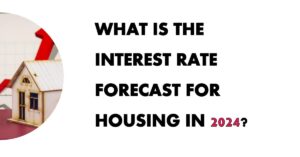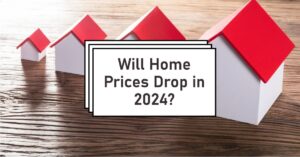The U.S. housing market is a mixed bag. There are some positive signs, but overall, caution is warranted due to ongoing economic challenges. While some signs of improvement exist, the overarching narrative remains one of caution amid significant economic challenges.
In this Freddie Mac report, we delve into the latest trends and forecasts. Let's explore the July 2024 U.S. housing market outlook: declining home sales, rising prices, and challenges ahead amid shifting mortgage rates.
U.S. Housing Market Outlook – July 2024
Steady Decline in Home Sales
Recent data from Freddie Mac reveals a concerning trend in home sales across the country. In May, total home sales—which include existing and new homes—reached 4.7 million. This figure reflects a 2.3% decline from April and a stark 4.9% decrease compared to the same period last year. This downturn in home sales marks a continuation of a troubling trend crystalized over the past few months, where both existing and new home sales have shown substantial declines.
- Existing Home Sales:
- In May, existing home sales were recorded at 4.11 million (seasonally adjusted annual rate).
- Month-over-Month Change: -0.7%
- Year-over-Year Change: -2.8%
- New Home Sales:
- The annualized rate for new home sales in May was 619,000.
- This represents a significant reduction of 11.3% compared to April.
These figures illuminate a market struggling with declining sales volume, despite some improvements in inventory levels that may offer a semblance of hope for prospective buyers.
Inventory Challenges
While it’s promising to see some improvement in inventory, the overall situation remains precarious, with inventory levels still lagging behind pre-pandemic averages:
- Existing Home Inventory: Grew by 19% year-over-year, reaching 1.28 million units. This data point is critical, as it highlights the fact that although inventory is increasing, it may not be enough to satisfy the ongoing demand.
- New Home Inventory: This sector is seeing its highest levels since January 2008, indicating a potential shift toward stabilizing the market and giving buyers greater choices.
The market's resilience is notably reflected in these inventory stats, yet the lack of robust supply continues to hinder broader recovery efforts.
Homebuilder Confidence and Construction Trends
Diminishing Builder Confidence
The outlook for home construction appears disconcerting, as highlighted by the National Association of Home Builders. Their Housing Market Index dropped to 43 in June, down from 45 in May, indicating that builders’ confidence is teetering below the neutral threshold of 50. This shift signals a predominantly pessimistic outlook for building conditions in the coming six months.
Key Factors Influencing Confidence Decline:
- High Mortgage Rates: The persisting high rates remain a significant deterrent for potential homebuyers, directly impacting builders' thoughts on future sales.
- Increased Construction Costs: Costs associated with materials and labor have surged, putting additional strain on builders’ margins and discouraging aggressive development strategies.
Construction Activity Decline
The construction sector's struggles are evident, with reported declines in new residential construction:
| Type of Construction | Month-over-Month Change |
|---|---|
| Total Housing Starts | -5.5% |
| Single-Family Starts | -5.2% |
| Multifamily Starts | -10.3% |
The numbers suggest significant slowdowns across various categories, underscoring the broader challenges facing the housing market. Despite this reduction in new starts, it is noteworthy that the number of units under construction for multifamily housing remains resilient, with 898,000 units actively being developed. This reflects a strategic focus on multifamily units, perhaps in response to ongoing affordability issues in the single-family market.
Mortgage Rates and Home Prices
Rates Impacting Market Activity
Recent trends in mortgage rates further complicate the housing landscape. In June, the average 30-year fixed-rate mortgage was reported at 6.92%, ending the month slightly lower at 6.86%. This marginal easing in rates has prompted a revival in mortgage activity:
- Overall Mortgage Activity: Increased by 14.5% month-over-month, signaling a growing interest in home purchasing and refinancing as rates dip below 7%.
- Refinance Activity: Experienced a notable uptick of 25.9% when compared to the same week in May, indicating that homeowners are motivated to take advantage of the slightly lower rates.
- Purchase Applications: Rose 8.0% month-over-month at the end of June, reflecting renewed consumer confidence to explore home purchasing options.
Home Price Trends
Despite increased activity, home prices continue to climb. The FHFA Purchase-Only Home Price Index showed a 0.2% increase month-over-month, and year-over-year house price growth remained robust at 6.3% for April. This steady appreciation in home prices, while reflecting strong demand, is a cause for concern, particularly for first-time buyers who may find affordability increasingly elusive.
Future Outlook: What Lies Ahead
Short-Term Challenges Persist
Looking forward, challenges evident in the current housing market are likely to persist. While demand for housing remains strong, several factors will play a crucial role in shaping the market’s trajectory:
- High Mortgage Rates: These will continue to dissuade potential buyers, contributing to suppressed sales activity.
- Escalated Home Prices: With prices on the rise, affordability will increasingly limit the buyer pool, making it difficult to stimulate sales volume.
- Limited Inventory Options: Although inventory is slowly improving, it remains below what would be necessary to meet demand robustly, further tightening the market.
Anticipated Improvements in 2025
Despite these short-term challenges, there is cautious optimism that conditions may improve by 2025 as mortgage rates are expected to ease. As a result, we could witness a gradual recovery in home sales, driven by a more favorable borrowing environment. Our baseline scenario anticipates:
- Increased Sales Volume: As affordability improves and buyer sentiment rebounds.
- Upward Pressure on Home Prices: While we foresee home prices continuing to rise, the pace may moderate slightly if inventory levels can catch up to demand in several key markets.
In conclusion, while the U.S. housing market grapples with significant challenges stemming from high mortgage rates and a constrained inventory supply, there are indicators that may herald a turnaround in the years ahead.
ALSO READ:
- Housing Market Predictions for Next 5 Years (2024-2028)
- Housing Market Predictions for the Next 2 Years
- Housing Market Predictions: 8 of Next 10 Years Poised for Gains
- Housing Market Predictions: Top 5 Most Priciest Markets of 2024
- Real Estate Forecast Next 5 Years: Top 5 Future Predictions
- Housing Market Predictions for 2027: Experts Differ on Forecast











